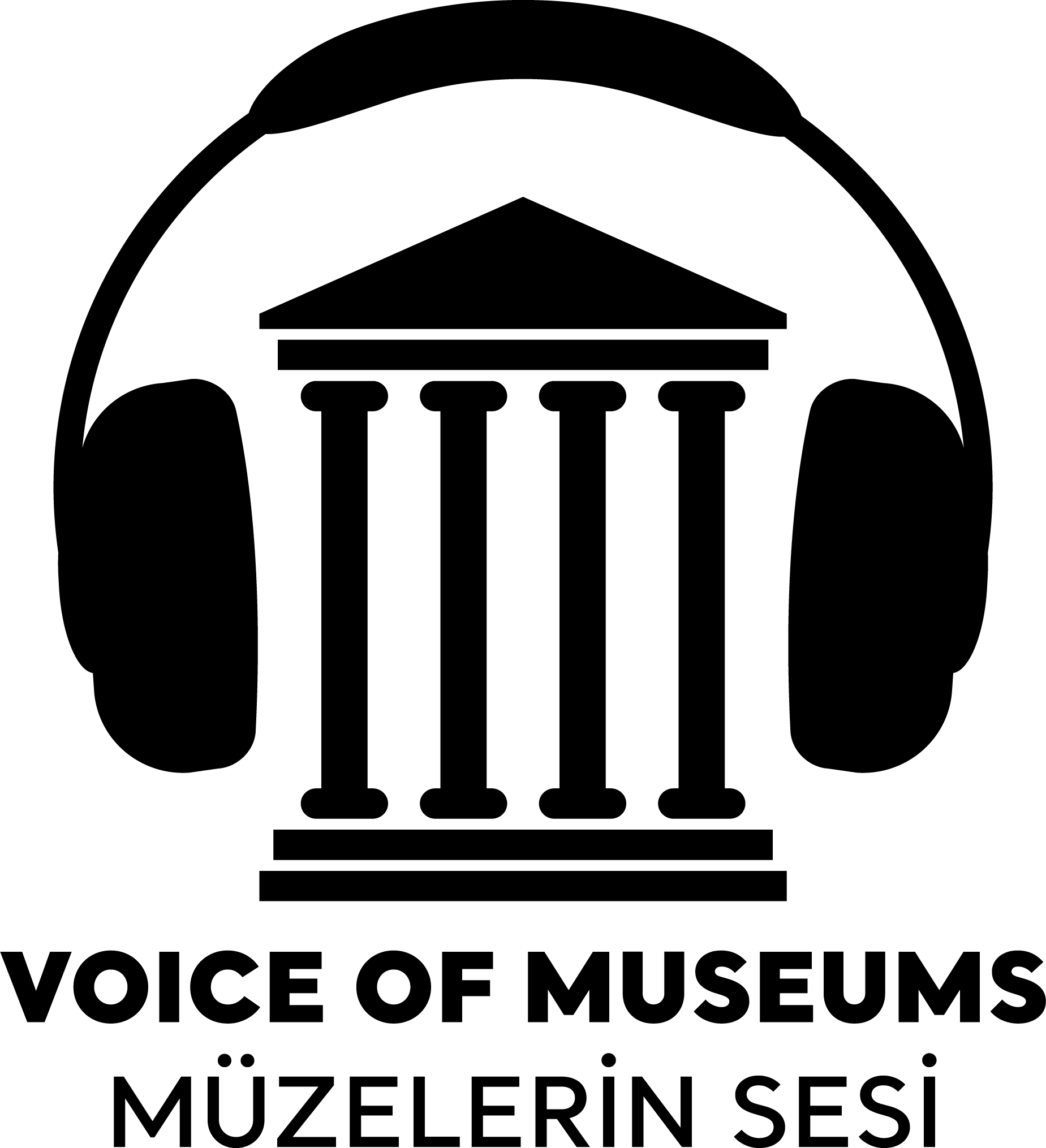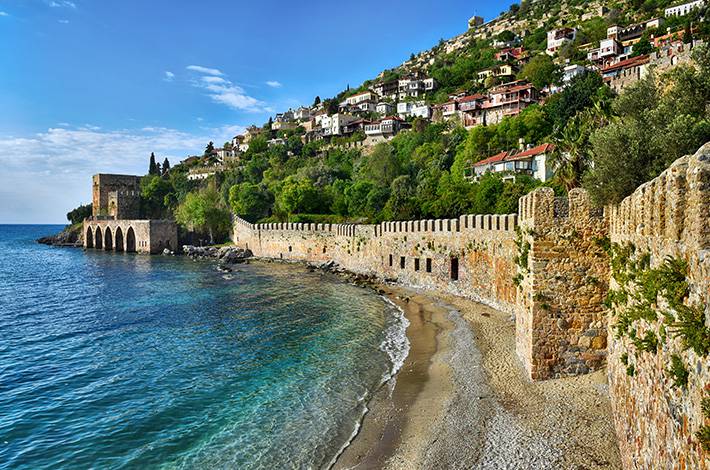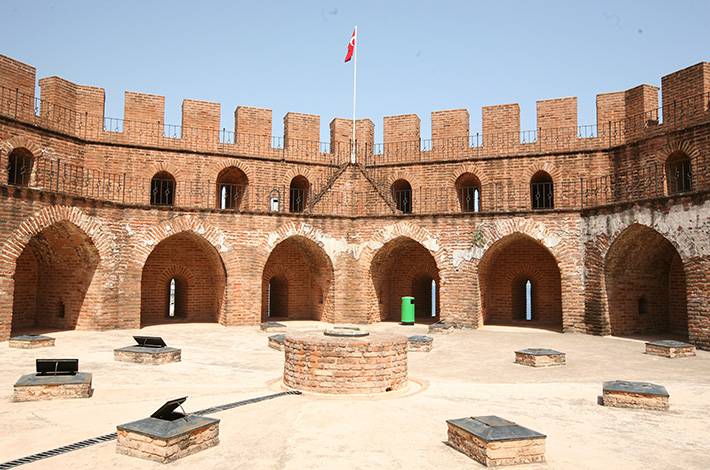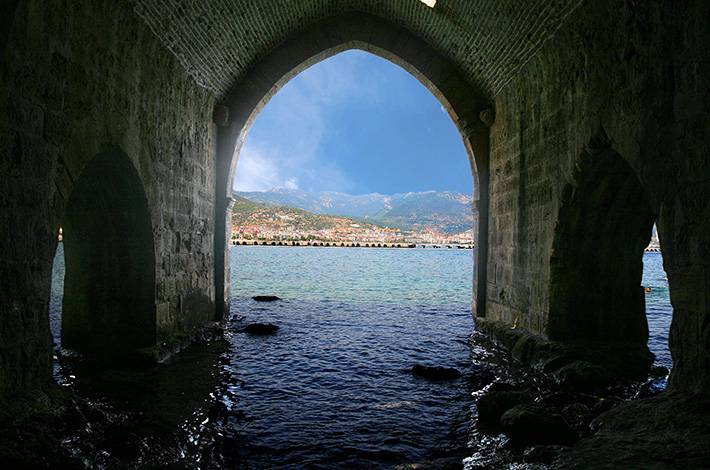Alanya Castle is a summary of the history of Alanya, a settlement that has been favoured throughout history due to its location. Although the majority of the castle is a Seljuk work, traces of almost every civilization in the history of Alanya can be seen on its walls and inside. Dating back to the 3rd century BC, Alanya Castle is one of the few defence structures that have survived to the present day. The castle's city walls span 6.5 kilometres. The Inner Castle in Alanya is an Open Air Museum where Byzantine, Seljuk, and Ottoman artefacts coexist. The Castle boasts several historical structures, including churches and chapels from the Byzantine Period, the Bedesten trade structure, the Masjid and Tomb named after Akşebe Sultan, one of the first commanders of the Castle, and the Seljuk Palace. The latter was constructed using remains of old buildings and features houses, baths, and nearly 400 cisterns that meet the Castle's water needs. Additionally, the Castle has dungeons, a 13th-century work rebuilt by Suleiman the Magnificent, the Süleymaniye Mosque, and a lighthouse dating back to 1720 that guided ships for years. The Red Tower: Symbol of Alanya During the Anatolian Seljuk Period, Alanya flourished and became the capital of the Sultanate. The Castle of Alanya was constructed during this time and took its present form. The Red Tower, which is now a symbol of Alanya, was commissioned by Kayqubad I in 1226. It stands 33 meters tall and has an octagonal plan. Its name derives from the color of its building material. The tower is in excellent condition, and its first floor is currently used as the Ethnographic Museum. The Shipyard: The only example to date The arched structure near the Red Tower, located seaside, was constructed during the Seljuk Period by Sultan Alaeddin Kayqubad I. It is one of the few surviving examples of the shipyards that enabled the Seljuks to become a dominant force at sea. The shipyard produced not only ships but also sails and other ship materials. The shipyard, which was in use until the 1960s, is now open to visitors as the Ship and Maritime Museum.
ALANYA CASTLE (CITADEL)





